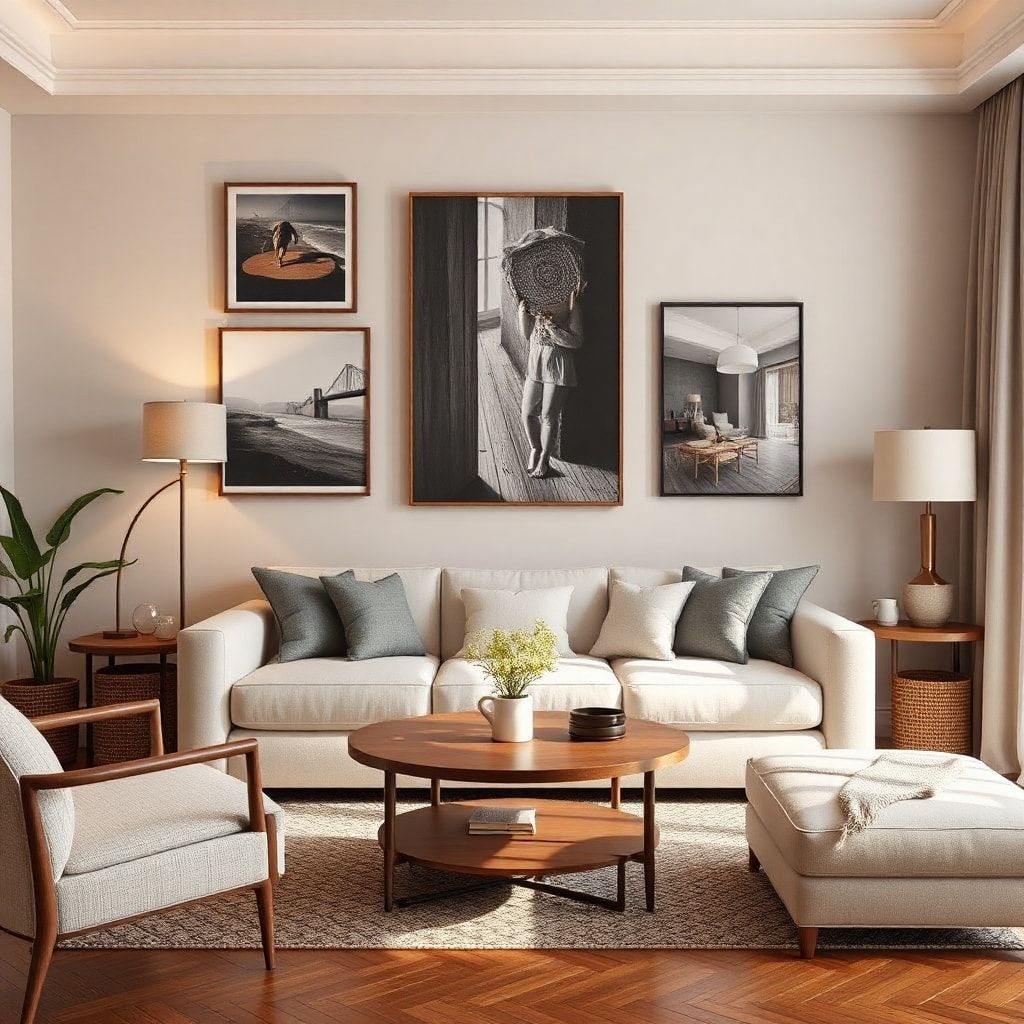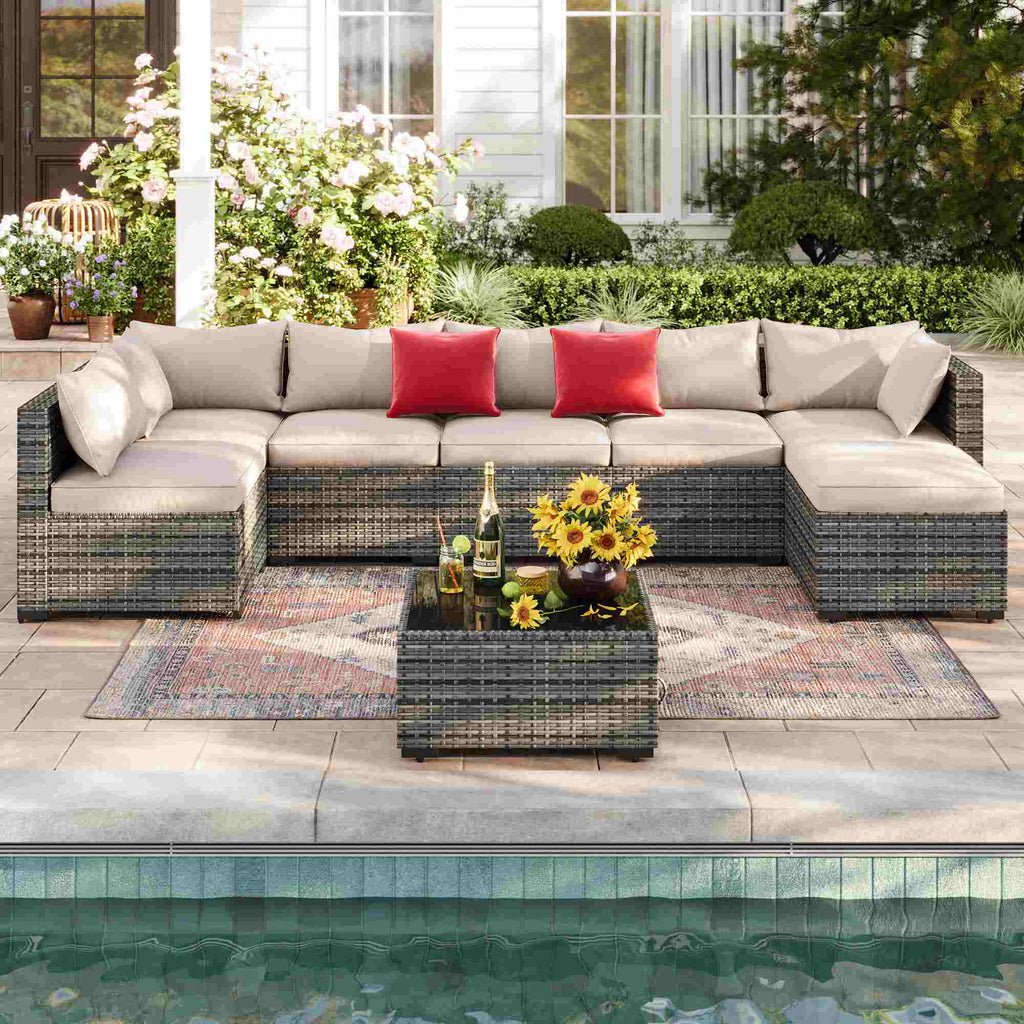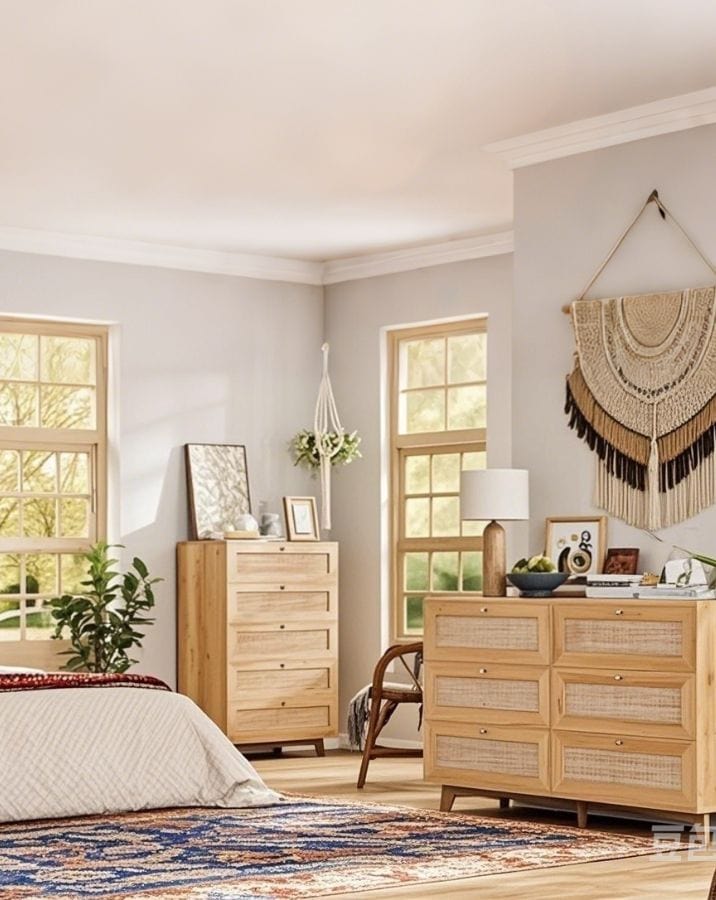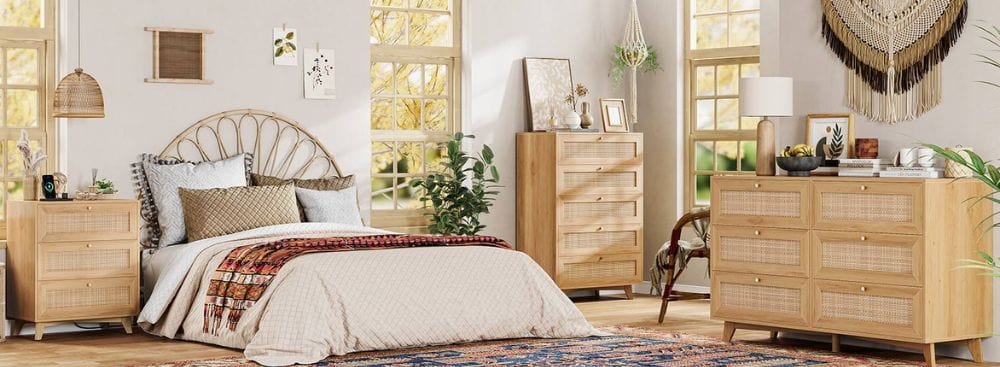
FAQs: Practical Guide to Choosing and Matching Furniture

In modern home living, furniture is not only a functional item but also a key element in enhancing the taste and personality of the living space. However, choosing and matching furniture can be quite challenging. Many buyers may encounter various problems during this process. Here, we provide straightforward and practical answers to common questions to help you easily overcome these challenges and brighten your home life.
Part One: Choosing Furniture
1. How can I judge the quality and durability of furniture?
Answer: Start by inspecting the seams and joints to see if they are sturdy. Sit on chairs and sofas to ensure they do not wobble. Additionally, check the smoothness of drawers and doors. Good quality furniture should glide smoothly without any resistance or noise.
2. What are the pros and cons of different materials?
Answer:
- Wood Furniture: Generally durable and environmentally friendly, making it suitable for long-term use. It can bring a warm and natural feel to your home, but it's typically heavier.
- Metal Furniture: Has a modern feel and is easy to clean. Metal pieces can be sleek and minimalist, ideal for modern homes, but might feel cold to the touch.
- Plastic Furniture: Lightweight and waterproof, making it ideal for children's rooms or outdoor use. It's often more affordable but may not offer the same level of durability as wood or metal.
3. How do I accurately measure the size of furniture and my home space to ensure it fits?
Answer: Use a tape measure to accurately measure the space in your home where you plan to place the furniture. Leave enough room for movement and other furniture pieces. Compare the detailed dimensions of the furniture to ensure it fits your room perfectly. Also, consider doorways and staircases through which the furniture will need to pass.
4. How can I buy high-quality furniture within my budget?
Answer: Set a clear budget range and pay attention to promotions and discounts. Consider the cost-performance ratio alongside the price. Before purchasing, browse user reviews and professional review websites to ensure you choose a high-cost-performance brand. Sometimes, investing a little more upfront can save you from premature replacements.
5. Are furniture materials environmentally friendly and safe?
Answer: Choose furniture with environmental certification marks and ask for harmful substance testing reports to ensure they meet environmental and safety standards, especially if you have children at home. Look for labels like FSC (Forest Stewardship Council) for wood, which guarantees sustainable sourcing.
6. Is the furniture multifunctional or convertible, and can it meet various usage needs?
Answer: Multifunctional furniture is very suitable for small spaces, such as metal loft bed frame, convertible sofa beds and multi-layer storage cabinets. These pieces can meet various usage needs and improve space utilization, allowing you to maximize the functionality of your living area.
7. Does the furniture need self-assembly, and is it easy to assemble?
Answer: Confirm whether assembly is required before purchasing and understand the difficulty of assembly. Some brands offer free assembly services, which can be considered. If you have DIY skills, self-assembly might not be a problem, but for more complex pieces, professional help can save time and stress.
Part Two: Matching Furniture
1. How do I match furniture of different styles?
Answer: Choosing furniture with a unified style makes it easier to match, such as modern, Nordic, or Chinese styles. You can find inspiration from the internet and magazines, and create a similar style according to your preferences. Consistency in design elements like color, material, and shape helps in creating a harmonious space.
2. How do I match the colors of furniture with interior walls, floors, and curtains?
Answer: Choose colors that match the walls, floors, and curtains. You can use neutral colors as the main tone and add bright colors for accents to enhance the room's layering. For example, a neutral-toned sofa can be brightened up with colorful cushions.
3. How do I arrange furniture reasonably to optimize space utilization and movement paths?
Answer: Plan the functional areas of each room and ensure smooth movement paths. Use furniture simulation software for pre-design layout to help you effectively utilize space. Consider the flow of traffic to prevent obstruction.
4. How do I use furniture to distinguish different functional areas in open spaces?
Answer: Use carpets, partition shelves, or different colored furniture to distinguish different functional areas, such as the living room and dining room, and create clear spatial divisions. This not only helps in organizing the space but also adds a visual distinction.
5. How do I choose and match soft decorations to enhance the home atmosphere?
Answer: Choose decorative items that match the home style, such as cushions, carpets, and paintings. This kind of matching can enhance the living style and make the whole space more coordinated and unified. Accessories can be changed seasonally to keep your home looking fresh.
6. How do I match the color and material of furniture with the light conditions of the room?
Answer: Dark furniture is suitable for well-lit rooms, while light furniture can make small spaces appear larger and brighter. Select suitable furniture according to the room's light conditions. For rooms with less natural light, opt for light-colored furniture to enhance brightness.
Part Three: Practical Suggestions
Doing Your Homework: When browsing furniture online, read user reviews and professional reviews, compare prices, and ensure you choose the best cost-performance ratio. Look for reputable sellers and consider the return policies.
Consulting Professionals: If unsure, consult an interior designer or furniture sales representative for professional advice. They can provide insights into the latest trends and practical solutions for specific needs.
Experiencing in Physical Stores: Before purchasing online, try to experience the actual products in physical stores to get a feel of the comfort and texture of the furniture, ensuring it matches your expectations. Sit on the sofas, open the drawers, and see the colors in real-life lighting conditions.
By following these straightforward and practical answers and suggestions, you can better solve the problems encountered in choosing and matching furniture, creating a beautiful and practical living environment. We hope this information is helpful to you! If you have more questions or require personalized advice, feel free to leave a comment for discussion.
























 Writing Desk
Writing Desk
 File Cabinet
File Cabinet
 Office Chair
Office Chair
 Bookshelf & Bookcase
Bookshelf & Bookcase
 LED Desk
LED Desk
 LED Makeup Vanity
LED Makeup Vanity
 LED Bed Frame
LED Bed Frame
 LED Dresser
LED Dresser
 LED Nightstand
LED Nightstand
 LED Hall Tree
LED Hall Tree
 LED Medicine Cabinet
LED Medicine Cabinet
 LED Coffee Table & LED Coffee Bar
LED Coffee Table & LED Coffee Bar










